The increasing prevalence of data-intensive applications propelled by advancements in machine learning and artificial intelligence gives rise to an unparalleled need for rapid data transfer and exceptionally fast data processing capabilities. These requirements place an ever-greater strain on the energy and link budgets of current computing and communication systems, often yielding suboptimal remedies for this burgeoning challenge. Although conventional electronic systems are diligently evolving to meet the escalating data demands, substantial enhancements can only be realized by pushing the boundaries of communication into higher frequency ranges and expanding computational frontiers beyond the confines of electrons.
The AMPs lab at Boise State University is committed to tackling key problems in computation and wireless communication. Employing state-of-the-art methods, the lab specializes in synthesizing magnetic and optical materials and seamlessly integrating them with nanoscale devices to pioneer solutions for these challenges.
In-Memory Photonic Computing
Beyond electrons, photons present compelling opportunities to enhance energy efficiency and reduce latency in photonic computing architectures. Notably, consolidating processor and memory units into a single in-memory computing unit can eliminate energy costs associated with data transfer. Our research endeavors to create an integrated photonic in-memory processor by addressing fundamental questions about:
- Identifying materials and their properties that enable in-memory computing.
- Defining data storage formats and associated read-write techniques.
- Designing photonic architectures that facilitate simultaneous amplitude, phase, and polarization manipulation.
At the AMPs Lab, we currently concentrate on the development of magneto-optical phase change materials and reprogrammable photonic devices to enable multi-bit data storage, paving the way for fully integrated photonic processors.
Terahertz Wireless Communications
Harnessing the terahertz (THz) regime enables high-capacity communication channels, boasting bandwidths exceeding 10 GHz and data rates exceeding 100 Gbps in device-to-device communication. Within this research domain, the AMPs Lab delves into the synergy of phonons, photons, and magnons (spin waves) to establish foundational components for a THz network, including THz emitters, modulators, passive isolators, and free-space detectors. This encompasses the development of innovative magnetic materials featuring anisotropies conducive to THz resonance, as well as the exploration of THz non-reciprocal device implementations. Our current focal points include compensated ferrimagnets and waveguide test-benches tailored for THz frequencies.
Previous Research
Magneto-Optical Isolators and Rare-Earth Iron Garnets
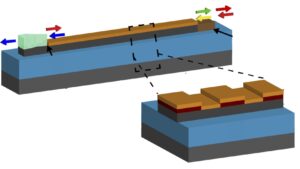
Fully integrated quasi-1D optical isolators on SOI waveguide platforms using seedlayer-free cerium-doped terbium iron garnets (CeTbIG). View full article: High-Gyrotropy Seedlayer-Free Ce:TbIG for Monolithic Laser-Matched SOI Optical Isolators!
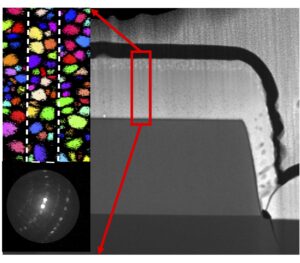
Advanced EBSD and TEM characterization reveals the crystalline quality of garnet cladding on Si waveguides. View full article: Crystallization of high gyrotropy garnets!
Mechanical Exfoliation and Heterogeneous Integration – “Cold Processes!”
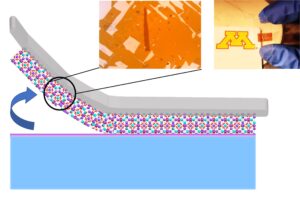
Diffusion-driven mechanical exfoliation of garnet nanosheets for room-temperature heterogeneous integration. View full article: Diffusion-Driven Exfoliation of Magneto-Optical Garnet Nanosheets!
Amorphous Ferrimagnets and Non-Reciprocal µ-wave/mm-wave Devices
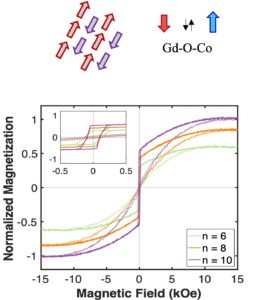
Amorphous ferrimagnets like GdCo can achieve anisotropy fields > 1 T, which in turn can allow resonance upwards of 30 GHz, well into the millimeter wavelengths. View full article: Engineering large perpendicular magnetic anisotropy in amorphous ferrimagnetic gadolinium cobalt alloys!
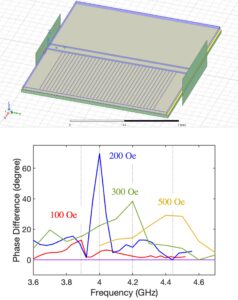
Materials like GdCo enable tunable phase shifters. Here, a high-impedance waveguide design with asymmetric serrations can be tuned to provide phase shifts between 3.6 – 4.6 GHz with a tuning magnetic field of less than 500 Oe. View full article!